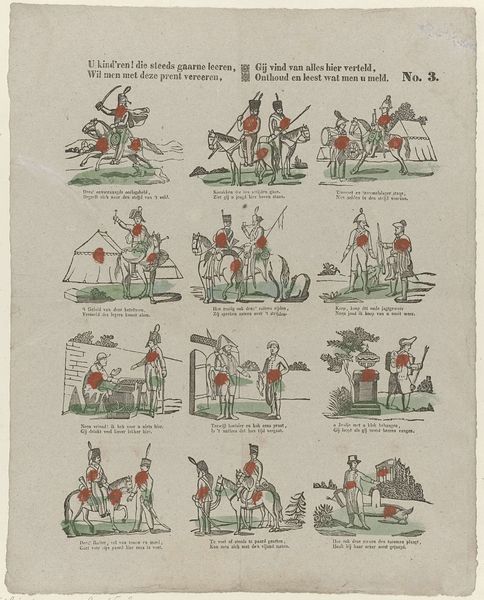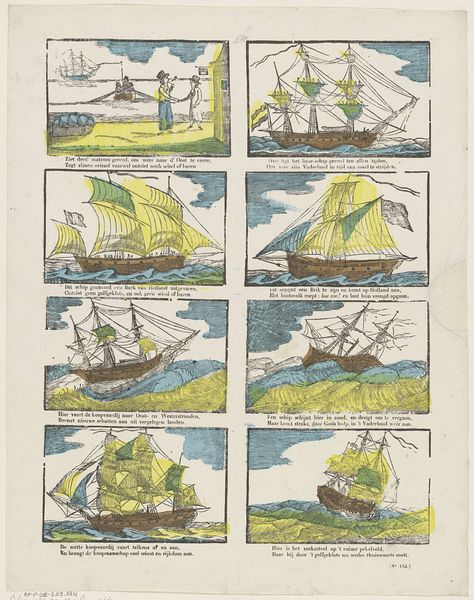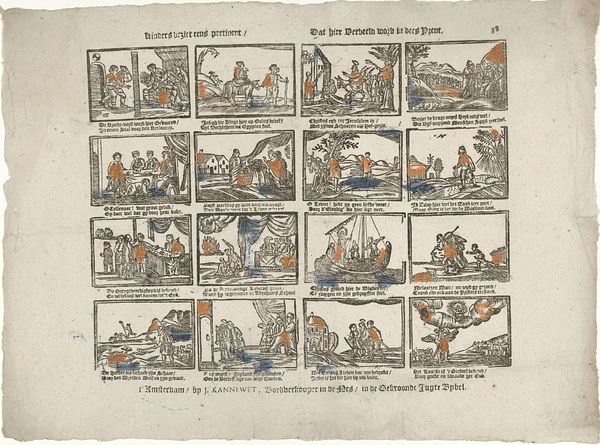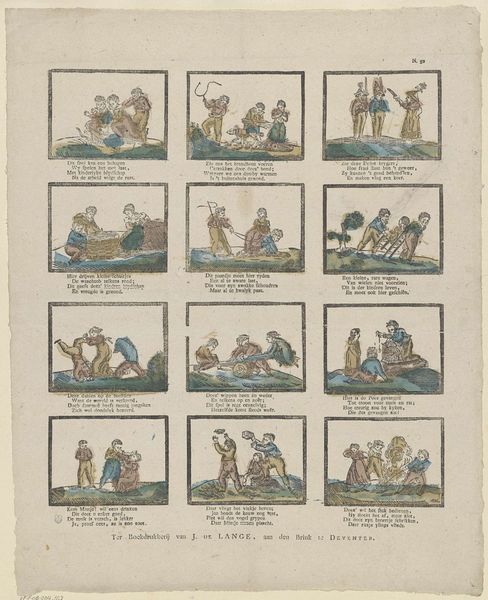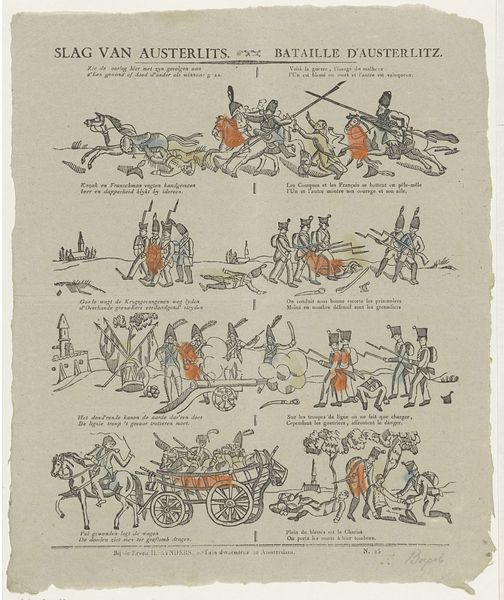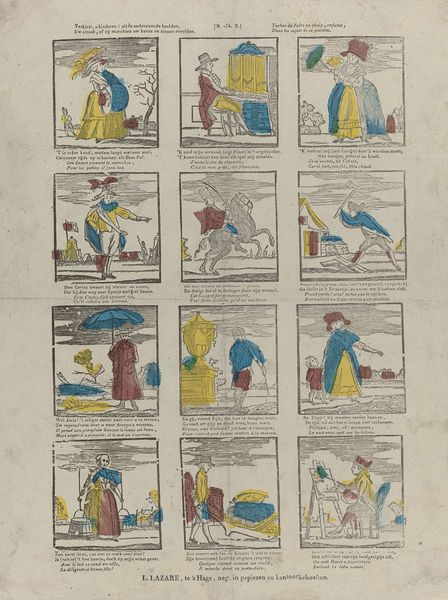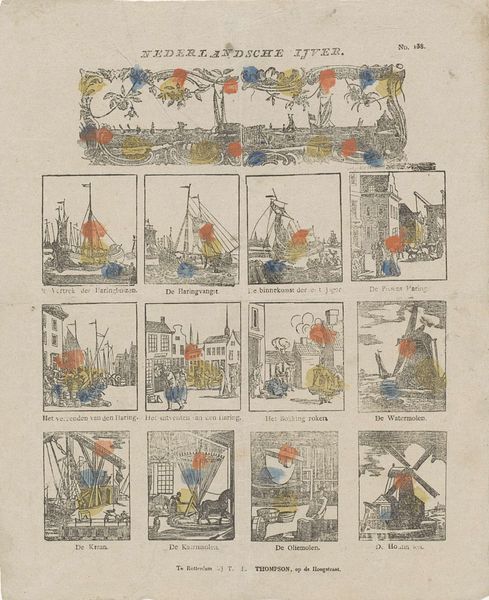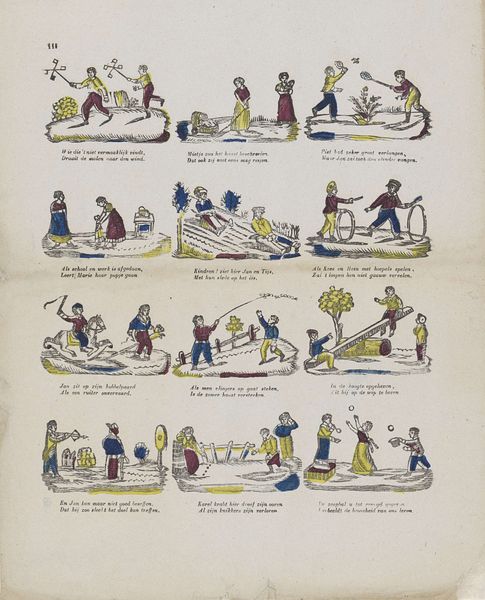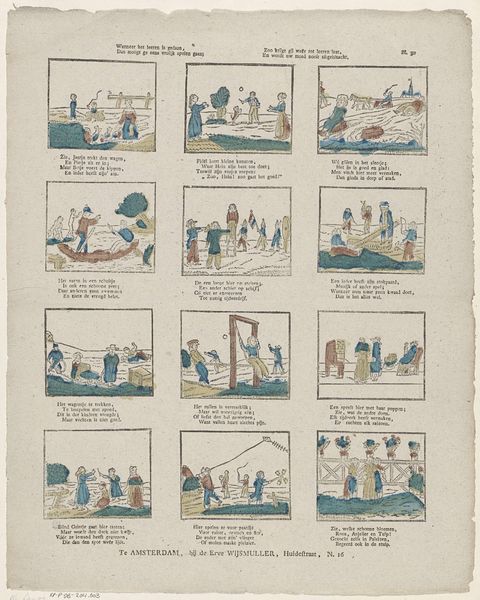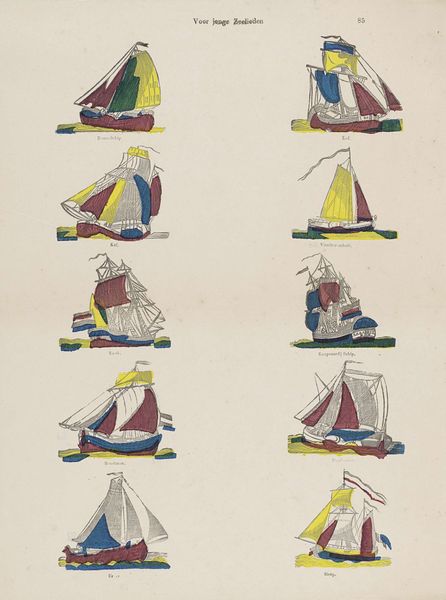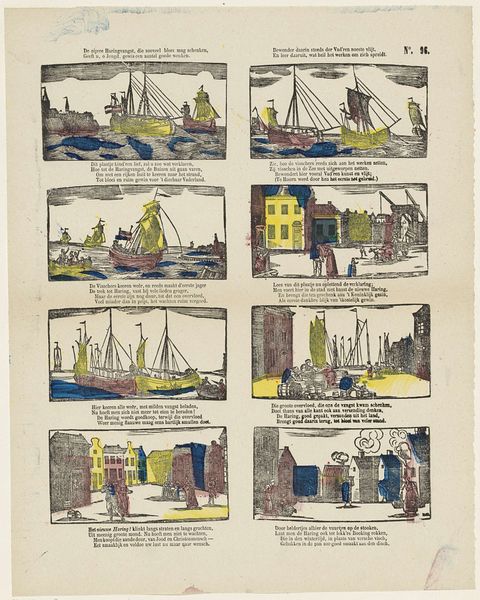
Kan, o lieve jeugd! deez' prent uw oog vermaken, / En doet u dit nu reeds naar 't zeemans leven haken. / Bevalt u dan deez' stand studeer dan ook met vlijt, / Want 't is doorgaans een deel, voor uwen levenstijd 1836 - 1849
0:00
0:00
print, engraving
#
dutch-golden-age
# print
#
landscape
#
romanticism
#
comic
#
genre-painting
#
engraving
Dimensions: height 435 mm, width 338 mm
Copyright: Rijks Museum: Open Domain
Editor: We're looking at a print titled "Kan, o lieve jeugd! deez' prent uw oog vermaken…" created by D. Lijsen between 1836 and 1849. It's an engraving showing several Dutch ships and cityscapes. It gives me a lighthearted, almost cartoonish feeling, perhaps due to the somewhat naive rendering and text. What is your read of this image, particularly considering the time it was created? Curator: It's crucial to see this print within the context of Dutch nation-building and burgeoning Romantic nationalism of the 19th century. It romanticizes maritime life, a powerful and nostalgic symbol of Dutch power during the Golden Age, as indicated by the "Dutch Golden Age" style tag. Note how the ships and cities— Antwerp, London—become simplified icons of national identity. The overlaid blue and red colouring almost treats them as symbols within an abstracted, political map, not mere illustration. Do you see any evidence of that nationalist messaging in the poem above each illustration? Editor: I do. The text seems to be glorifying maritime life and, if I understand correctly, encouraging youth to consider a life at sea. Almost like propaganda? Curator: Precisely! And that's where the genre painting elements come into play. These aren't just neutral landscapes. They depict specific ships, likely known at the time, creating a connection to everyday life while promoting a particular vision of Dutch identity and destiny. Notice how it says "Holland" instead of the full state's name of the time? Editor: So, this print wasn’t simply about depicting ships; it was actively shaping public opinion and promoting a specific national identity. It makes me wonder about the intended audience and how widely it circulated. Curator: Exactly. It was through images like these that a shared national consciousness was cultivated, particularly in a period of significant social and political change. The public role of art in solidifying national identity becomes strikingly clear here. Editor: I hadn't considered it in such a social context. I see it very differently now. Thanks!
Comments
No comments
Be the first to comment and join the conversation on the ultimate creative platform.
